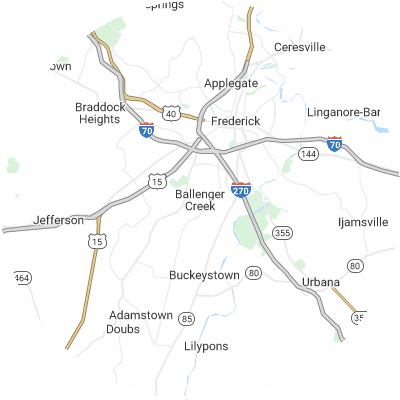Signs You May Need Gutter Guards
Although gutter guards aren't always required, the symptoms of clogged gutters are usually clear. Signs of ongoing gutter issues include:
- Leaky seams or joints where water leaks out of gutters
- Frequent clogs that lead to overflow and water spilling over gutters
- Soggy ground or visible erosion around your house's foundation
- Visibly damaged, sagging, or misaligned gutters that no longer correctly direct rainwater
- Mold growth, interior wall stains, or peeling exterior paint on walls near gutters.
How To Choose a Gutter Guard Installer
Assess Their Experience
When selecting an installation company, look for one with years of experience and knowledge about many brands and guard types. A company with experience will understand how to take measurements and fit gutter guards for your specific needs. Check a provider's years of experience and request referrals from local customers.
Verify Proper Licensing and Insurance
Verify that the businesses you're considering have valid licenses, bonds, general liability insurance, and workers compensation coverage. This protects you in case of any incidents that could arise. Ask potential providers for current licensing and insurance papers.
Choose Reputable Brands
Look for installers that offer leading trusted gutter guard brands such as LeafFilter and Gutter Helmet. Steer clear of companies that only install generic no-name guards or their own off-brand products. These lesser-known products may lack rigorous testing.
Seek Custom Fit Services
Your guards should be measured and trimmed on-site to match your gutters. Select a company that specifically measures and trims guards for your home rather than using one-size-fits-all guards. Guards fitted for your home leave no gaps for debris accumulation.
Examine Warranties
Top gutter guard installers often offer 20-year or lifetime warranties for clogs, rust, leaks, and other issues. When selecting a company, read through the warranty details for both workmanship and materials guarantees. Warranties provide the best protection for your gutter investment.
Check Reviews and Referrals
Take some time to look at online reviews on the Better Business Bureau (BBB), Yelp, Google Reviews, and other review sites to find customer feedback. Ask neighbors which companies they recommend for quality local gutter guard installation. When researching, look for providers with plenty of satisfied customers rather than just a single recommendation.
Types of Gutter Guards
There are six primary types of gutter guards. These include the following:
- Foam guards are lightweight and easy to install. This type of guard catches debris on the foam and keeps it out of your gutter. Foam guards cost around $2.47 per linear foot.
- Brush guards are made of large brush bristles that sit inside your gutters, allowing water to pass through while catching debris. On average, you can expect to pay $4.06 per linear foot for brush guards.
- Screen guards have large holes that allow water to pass through while blocking debris. On average, you can expect to pay $4.75 per linear foot for screen guards.
- Mesh guards have smaller holes than screen guards and similarly catch debris while allowing water to filter through. Mesh guards are durable and let debris slide off rather than sit on top of your gutters. On average, you can expect to pay $4.42 per linear foot for mesh guards.
- Micro-mesh guards are typically the most effective. They have smaller holes than standard mesh guards, which allows even less debris through. Micro-mesh guards cost roughly $5.47 per linear foot.
- Surface tension guards, sometimes called reverse curve guards, use surface tension to encourage debris to slide off while water flows through into the gutter. They can typically be seen from the ground. On average, you can expect to spend $3.48 per linear foot for surface tension guards.













